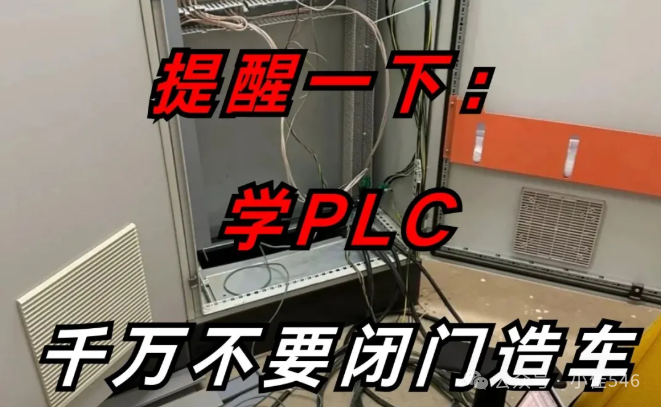
Introduction
Hello everyone! Today, I want to share an exciting technology for engineers in the industrial communication field—PLC Protocol Penetration. Don’t be intimidated by this technical term, I will unveil its mysteries in the most relatable way.Imagine: PLCs in the workshop can directly “talk” to cloud servers, and devices from different brands can collaborate seamlessly as if they speak the same language! This is the magic of protocol penetration technology.Want to know how it breaks communication barriers? Join me in exploring!
What is Protocol Penetration?
Let me give you a real-life example: You use WeChat in China, while your friend uses WhatsApp in the USA, without a translator, you cannot communicate at all. Traditional industrial communication is like this scenario—devices at different levels use different “languages” (protocols), leading to complex data transmission conversions.
Protocol penetration technology acts like giving all devices a **”universal translator”. It allows data to directly penetrate between different protocols, just like light passing through glass without barriers.The key breakthroughs are:
-
Cross-level communication: Field-level PLCs can directly communicate with control-level SCADA
-
Multi-protocol compatibility: Free intercommunication between Siemens S7 protocol, Modbus TCP, OPC UA, etc.
-
No intermediate conversion: Data retains its native format, avoiding delays or distortions caused by parsing
Why is Protocol Penetration Needed?
You might wonder: “Can’t existing gateway conversions achieve protocol interoperability?” Let’s look at three pain point comparisons:
| Scenario | Traditional Gateway Solution | Protocol Penetration Solution |
|———————|————————————-|————————————-|
| Remote device monitoring | Requires 4 layers of protocol conversion, with delays up to 200ms | End-to-end direct connection, delay <50ms |
| Cross-brand device integration | Each protocol requires separate driver development, taking 2 weeks | Plug and play, configuration time <1 hour |
| Big data analysis | Data may lose key fields after multiple conversions | 100% fidelity in original data transmission |
Even more astonishing: After adopting protocol penetration, a certain automotive welding workshop saw a communication failure rate drop by 80%, and system response speed increased threefold!
Core Technology Analysis
1. Protocol Stack Virtualization (Core Technology)
Like giving different protocols a “universal plug”:
-
Dynamic protocol mapping: Automatically identifies device protocols and establishes mapping tables
-
Data channel tunneling: Marks different data streams using
<span> virtual channel ID</span> -
Traffic shaping: Smartly allocates bandwidth to ensure critical data is prioritized for transmission
Case Study: Rockwell PLC and Mitsubishi robots directly exchange motion control commands through a virtual protocol stack, eliminating 3 intermediate gateways.
2. Metadata Transmission Technology
Data carries its own “identity card”:
# Example of data packet structure
{
"source": "PLC1.DBW100", # Source address
"protocol": "S7-1200", # Native protocol
"timestamp": "2023-08-20T14:30:00.000Z",
"value": 37.5, # Actual value
"qos": "high_priority" # Quality of service tag
}Advantages: Even after multiple hops, the receiving end can accurately restore the data context.
3. Intelligent Routing Engine
As efficient as a package sorting system:
-
Path self-learning: Records historical communication delays and dynamically selects the optimal path
-
Self-healing: Switches to a backup channel within 0.5 seconds when a link is interrupted
-
Load balancing: Parallel transmission across multiple channels, increasing throughput by 400%
Practical Application Scenarios
▶ Case 1: Digital Twin in Smart Factory
Challenge: Need to synchronize data from over 2000 devices to the cloud twin system in real-time
Solution:
-
Deploy protocol penetration proxy at the edge gateway
-
Uniformly package data from different devices in
<span>OPC UA</span>/<span>Modbus</span>format as<span>MQTT</span> -
Throughcompression transmission technology, bandwidth usage reduced by 70%
Effect: Cloud model and physical device state delay <100ms, truly achieving virtual-physical synchronization.
▶ Case 2: Intelligent Transformation of Legacy Equipment
Classic Problem: How to connect a 90s-era machine tool with only an RS232 interface to the industrial internet?
Pentration Solution:
-
Use
<span>protocol penetration terminal</span>(the size of a hardware key) -
Automatically convert the legacy device’s custom protocol to standard OPC UA
-
No modification of the original PLC program, plug and play
Customer Feedback: “It’s like giving old equipment 5G wings!”
Implementation Challenges and Strategies
⚠️ Be aware of these “pits”:
-
Security Risks: Transparent transmission may expose vulnerabilities in the original protocol
- ✅ Countermeasure: Enable
<span>protocol-level firewall</span>+<span>dynamic encryption tunnel</span>
Clock Synchronization: Timestamp inconsistencies across devices
- ✅ Countermeasure: Deploy IEEE 1588 Precision Time Protocol
Resource Consumption: Some legacy PLCs have insufficient memory
- ✅ Countermeasure: Use
<span>lightweight penetration proxy</span>(memory usage <1MB)
Quick Start Guide
Three steps to start your protocol penetration journey:
-
Hardware Preparation:
-
Industrial switch supporting TAP mode (e.g., Hirschmann MACH4000)
-
Protocol penetration software license (recommended
<span>Profinet penetration suite</span>)
Configuration Process:
# Example: Establishing a penetration rule from S7 to Modbus TCP
create_tunnel --source 192.168.1.10:102 --target 192.168.2.20:502 \
--protocol s7_to_modbus --qos highVerification Method:
-
Use Wireshark to capture packets and view the original protocol frames
-
Use
<span>pingpong test</span>to verify end-to-end delay
Future Outlook
5G + Protocol Penetration = A New Era of Industrial Communication:
-
Trend 1: Deep integration of TSN (Time-Sensitive Networking) with penetration technology
-
Trend 2: AI-driven protocol self-learning systems (Beta version already in testing)
-
Trend 3: Quantum encryption protocol penetration, achieving absolute security in transparent transmission
Interactive Discussion
-
In your factory, which communication barriers between devices are the most troublesome?
-
If you try protocol penetration technology, are you more concerned about security or performance?
-
For imported devices without open protocols, what experiences do you have in breaking through?
Feel free to share your practical stories in the comments! Let’s push the boundaries of industrial communication technology together! 🚀
Final Reminder: Protocol penetration is not a silver bullet, but it is definitely a tool for breaking down information silos. As an engineer once said: “When data flows, intelligence truly begins to grow.”
Click to shareClick to saveClick to viewClick to like